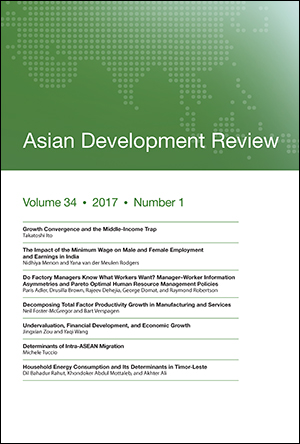Erratum: Population Aging and Potential Growth in Asia
“Population Aging and Potential Growth in Asia”
by Keisuke Otsu and Katsuyuki Shibayama
Volume 33, Issue Number 2, pp. 56–73
| 1. | The printed article contains inaccurate quantitative results due to a computational error. The corrections are indicated below in bold italics:
| ||||||||||||||||
| 2. | The corresponding Table 3 and Figures 5a–5f are corrected as follows. In addition, the order of Figures 5c, 5d, and 5e in the printed article is incorrect. We have corrected the order below. | ||||||||||||||||
Corrected Table 3
| Model | Growth Rate | Difference from Benchmark (percentage points) |
|---|---|---|
| No Demographic Effects | 2.50% | 0.21% |
| Benchmark | 2.29% | – |
| with Government Consumption | 2.35% | 0.06% |
| with Labor Income Tax | 1.88% | −0.41% |
| with Productivity | 1.89% | −0.40% |
| with All Channels | 1.58% | −0.71% |

Figure 5a. The Benchmark Model

Figure 5b. Demographic Effects

Figure 5c. Model with Demographic Effect on Government Consumption

Figure 5d. Model with Demographic Effect on Labor Income Tax

Figure 5e. Model with Demographic Effect on Productivity

Figure 5f. Full Model


